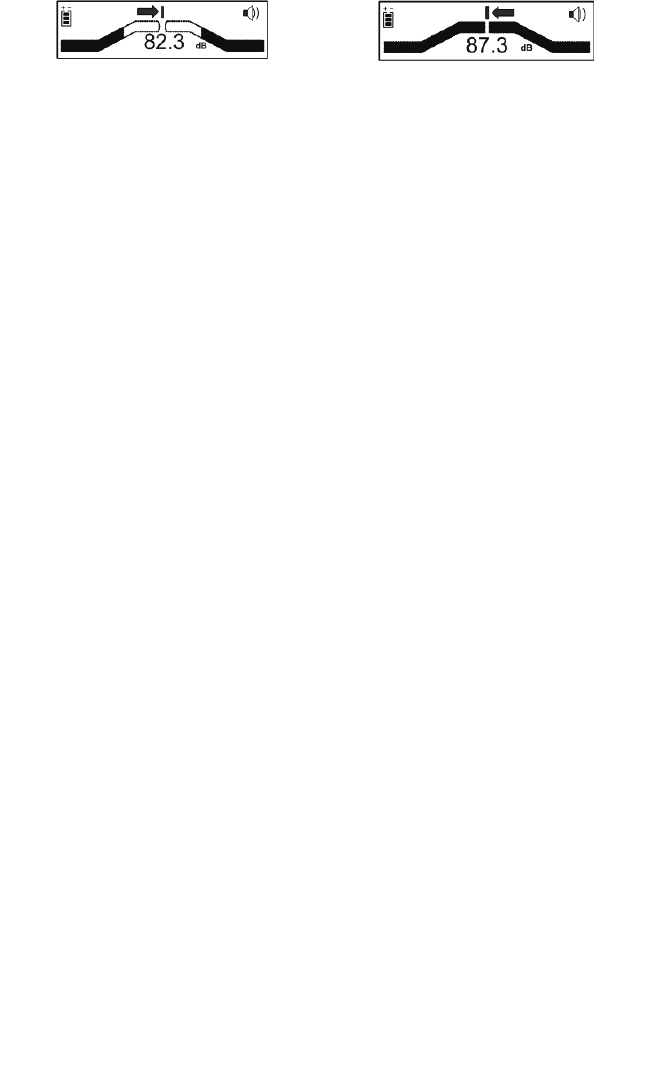
24 78-8130-6151-8-E
− Adjust the Gain Down [4] if the bar graph closes completely.
− The numbers on the display will change with the signal strength (smaller, as you
walk away from the target path; larger, as you approach the target path).
− Make a complete circle around the transmitter. Return to each point in the circle
that the receiver detected.
15. Measure the depth and current of each to identify the target path. The depth of the
target path should be as expected and the relative current should compare to the
relative current of the transmitter.
Note: The current reading will decrease steadily as the locator moves away from the
transmitter. When using higher frequencies, this decline is more evident.
16. Adjust the gain so that the bar graph responds to the target path (open when off
path, almost completely closed when directly over target).
17. Trace the cable/pipe at a slow walk while moving the receiver in a side-to-side
motion, keeping the receiver perpendicular to the ground.
18. Measure the depth and current occasionally to verify target path.
Note: In order to measure the depth and current accurately, the operator must
pinpoint the target pipe or cable, and the receiver handle should be in-line with the
target path.
− While in DirPk mode, find the highest signal strength [10].
− Lower the tip of the receiver to the ground. Twist the receiver left and right
while watching the signal strength.
− When the highest reading is displayed, the handle of the unit is in line with the
target pipe or cable.
Occasionally, signal will appear on adjacent cables or pipes. Compare the relative
and actual current readings over each path to help determine the target path. Current
readings will be significantly less on the adjacent cable compared to the target path.
19. As tracing proceeds, remember that the most powerful signal is near the transmitter.
As the receiver gets farther away from the transmitter the signal strength [10]
decreases. It may be necessary to readjust the gain as needed; to be sure there is
adequate signal for the receiver to operate. Press the Gain up/down [4] when the
bar graph is no longer visible (too little signal) or when the bar graph is closed (too
much signal).
20. Trace the path until you reach a logical termination point (i.e.: terminal, meter,
cabinet, etc).


















